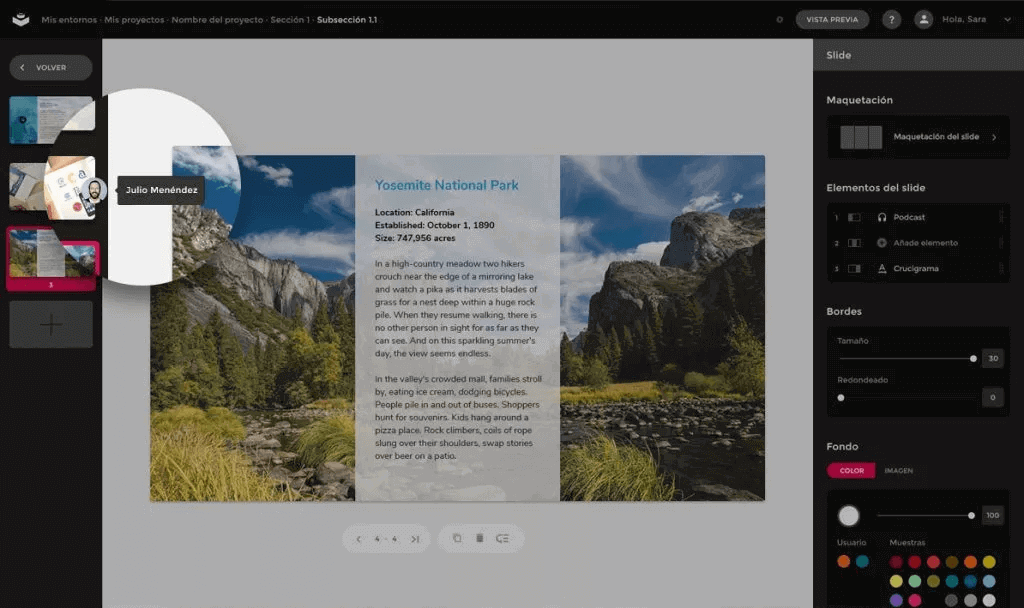Table of contents
ToggleA company’s day-to-day dynamics make it difficult to document processes or exchange knowledge. We are spurred on by need, that is, we look for people who know what we need to know exactly at the moment when we need that information.
As companies grow in size, locating that expert who can help us takes more time and effort. Once we’ve found them, what happens if our expert is on vacation? Or worse, what if they’ve just retired? Fostering a knowledge management culture is key to gaining agility and competitiveness.
Benefits of a Knowledge Management Culture
The benefits of working in a company where employees have a habit of sharing their knowledge are obvious:
- Employees are more involved in the organization. Teaching and sharing helps you feel valued and needed; it’s an activity that grants you recognition on its own. Teaching is rewarding. The employee sees how their knowledge helps others and that makes them feel good.
- Better training content with much less effort involved. Having a quality knowledge base in your organization makes it much easier to plan and prepare training courses.
- Knowledge is accumulated in the company and not in the person. If the person leaves, the knowledge stays.
- Identification of internal experts. Encouraging employees to share their knowledge gives a voice to those who have accumulated more knowledge than others because of their experience and time in the company. These people can later act as mentors to new employees, and these are usually critical job positions that need to be properly cared for and managed.
- The problem-solving process is more streamlined and simple. The employee doesn’t waste time looking for an in-house expert who can help them; they have an entire shared knowledge base, a resource library where they can find the answers to their questions.
Barriers to Sharing Knowledge
While the benefits are very clear, both for the company and for the employees themselves, not everything is that simple. When it comes to sharing knowledge, you may encounter several barriers, which you need to be aware of so as to minimize them:
- Lack of time. Employees are often reluctant to devote their precious time to others, especially if what is required of them is not part of their goals.
- Resistance to change. It’s always hard to start new habits. We are tied to our routines and getting out of them to incorporate a new one takes time and effort.
- Lack of participation. We are usually unaware of everything we know, and this may mean that many employees don’t consider themselves experts and don’t participate because they think they have nothing to teach.
- Complicated processes. If you’ve overcome the previous barriers, but your employees face a complex and cumbersome process to share their knowledge, you have a problem.
- Fear of losing their job. Some of your employees may have the mindset that knowledge is power. If they share it, they are no longer needed and may be fired more easily. It’s a very natural attitude, given the competitive environment in which we find ourselves.
These barriers can be overcome by setting up the right guidelines for this. Keep reading and find out what they are!
Build knowledge sharing into your company’s DNA
If you want your employees to spend time sharing their knowledge, you need to make this strategic. From senior management to the newly arrived employee, they all have to be aware of the benefit that this practice provides. Team leaders should practice knwledge sharing as an example and encourage it in their teams, setting time aside for it and making it part of their goals.
Make sharing knowledge easy
Forget complicated processes and tools. Your experts know the content, but they’re not computer programmers or designers. On the one hand, you have to present a process that is easy and accessible to everyone, on the other hand, you have to provide a tool to create courses as simple as possible and which offers and which offers the best results to minimize the work that comes afterwards.
Fortunately, content creation tools like isEazy make that task much easier. Find a knowledge sharing platform that allows you to work collaboratively (several people working at once on the same content) to make the task even easier.
Identify which content is the most suitable for your employees to create
The content created by your employees is not the answer to everything. Identify which are the most suitable subjects. For example, product or process knowledge are ideal topics for your employees, while regulatory or skill-related subject matter is usually best left to professionals in these areas.
Make shared knowledge useful
Get each piece of content that your employees produce to answer a specific question or solve a common problem. This will quickly make your employees see the benefit of sharing, because it solves their day-to-day problems faster.
To do this, first develop a catalog of key learnings within your organization and then look for the knowledge that covers those learnings.
Facilitate feedback, asking your employees which part of this knowledge they find most useful to them, how it might be improved, and what other things are missing. This way, your knowledge base will naturally manage itself.
Let everyone benefit from shared knowledge
It’s useless to create a culture where employees share their knowledge if that knowledge isn’t easily available to the entire organization. Think about how you’re going to structure it to make it easy to find the answer to those key questions and decide which tool will allow you to make all that content better structured and more accessible.
Promote and expand shared knowledge
Knowledge marketing is very important in this regard. Employees are very busy and don’t have time to sift through the entire shared knowledge base. New employees will not even know that this base exists if no one tells them. Therefore, don’t forget to communicate: give tips periodically, explain what new content has been incorporated into the base, advertise those contents in the different internal communication tools at your disposal.
Reward those who share
Positive reinfoncement is essential, don’t you forget it. If an employee shares, reward them. There are many ways to do this, not just monetary. We mentioned the possibility of including it as part of their goals, but you can also link knowledge sharing to internal promotion. This will eliminate the fear of being fired that some employees may have. Allow employees to “endorse” the content they create, give them small gifts and, above all, appreciate and praise their work in public. Make your employees who share feel important for doing so.
You’ve seen the benefits of sharing knowledge within an organization, some of the barriers you may encounter, and guidelines for sharing knowledge. Now it’s your turn to launch a culture of shared knowledge in your organization.















